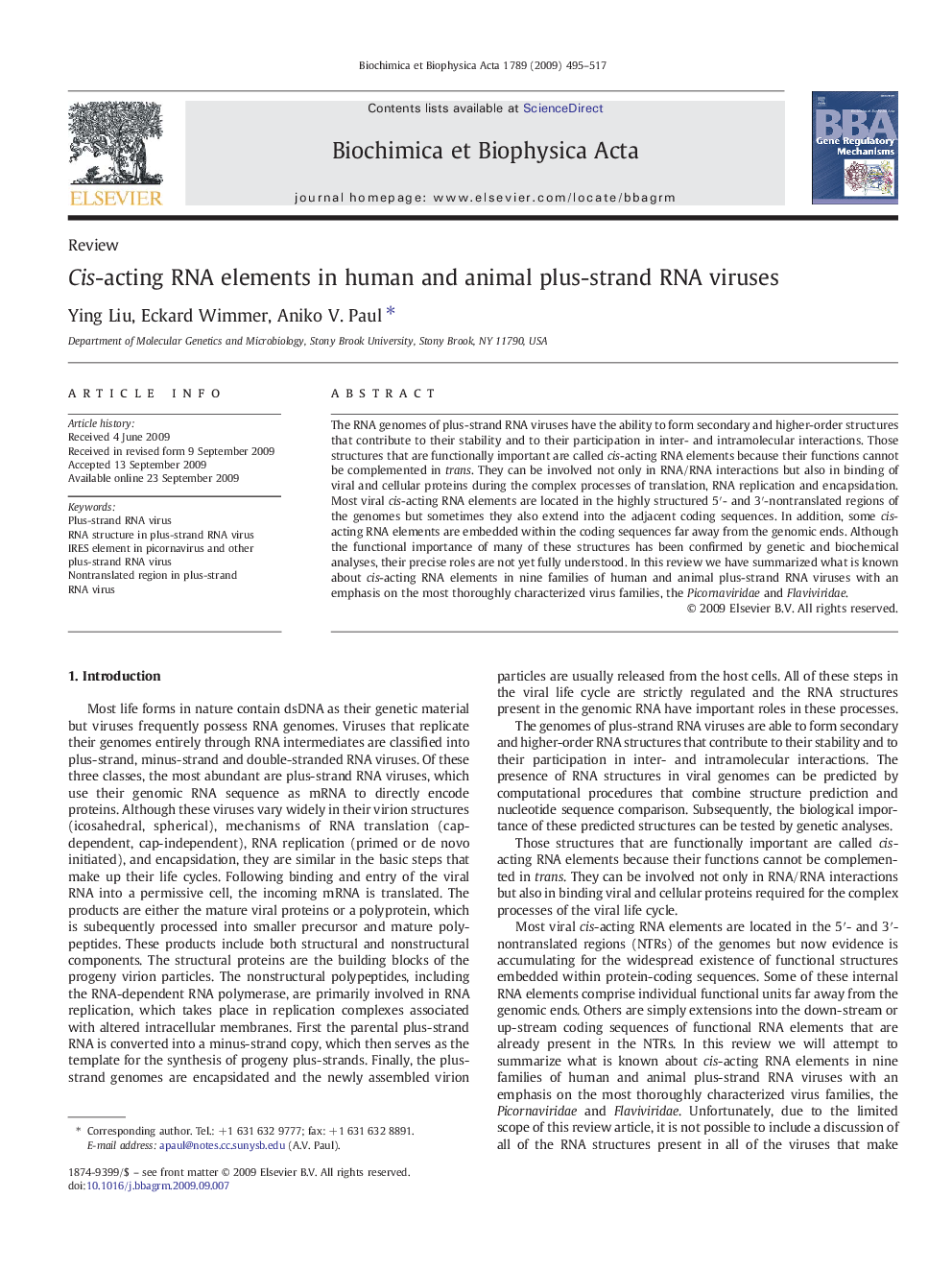| Article ID | Journal | Published Year | Pages | File Type |
|---|---|---|---|---|
| 1946866 | Biochimica et Biophysica Acta (BBA) - Gene Regulatory Mechanisms | 2009 | 23 Pages |
The RNA genomes of plus-strand RNA viruses have the ability to form secondary and higher-order structures that contribute to their stability and to their participation in inter- and intramolecular interactions. Those structures that are functionally important are called cis-acting RNA elements because their functions cannot be complemented in trans. They can be involved not only in RNA/RNA interactions but also in binding of viral and cellular proteins during the complex processes of translation, RNA replication and encapsidation. Most viral cis-acting RNA elements are located in the highly structured 5′- and 3′-nontranslated regions of the genomes but sometimes they also extend into the adjacent coding sequences. In addition, some cis-acting RNA elements are embedded within the coding sequences far away from the genomic ends. Although the functional importance of many of these structures has been confirmed by genetic and biochemical analyses, their precise roles are not yet fully understood. In this review we have summarized what is known about cis-acting RNA elements in nine families of human and animal plus-strand RNA viruses with an emphasis on the most thoroughly characterized virus families, the Picornaviridae and Flaviviridae.
